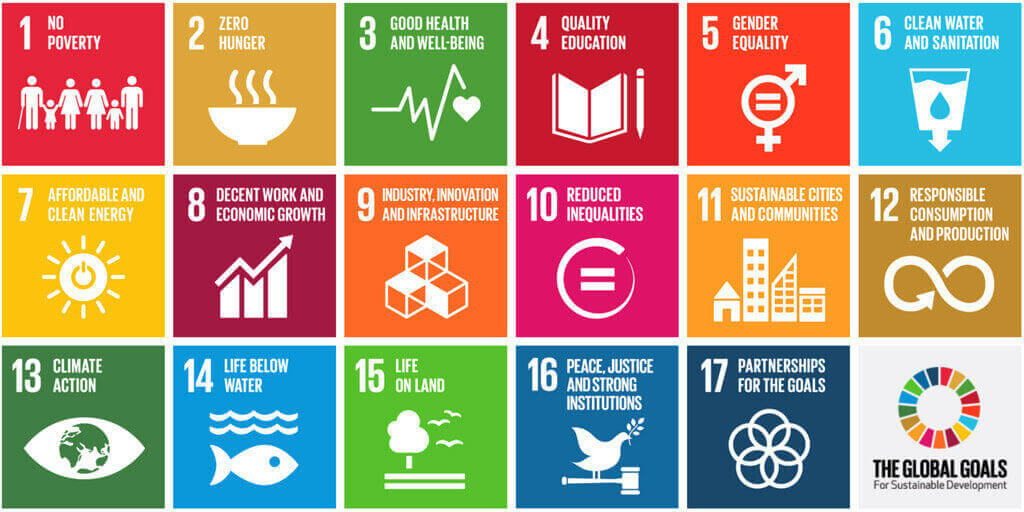A variety of data, insights and statistics are required to implement the Sustainable Development Goals. The information should be valuable, insightful, timely, apt and adequate for the decision makers to make strategies and key decisions. The data has to be accurate, timely, apt and adequate. Though statistical volume still requires solidification, and when it comes to data literacy, it has to be evolved at every level of the decision-making process. It will need a lot of organized efforts on the part of data creators and users from numerous data solutions. Overcoming multi-layered barriers to sustainable development will also require innovative technologies to generate and implement data and statistics.

The UN Global Goals. Source: United Nations
Sustainable Development Goals
There are a plenty of SDG indicators to review. With the help of Big Data, companies can keep a track of the development plans more smoothly because it supplements the customary data sources. The Sustainable Development Goals include specific, time-sensitive, and quantifiable objectives in relationship with the national development strategies. There are probably over 230 SDG indicator. However, a lot of these indicators require proper disaggregation by several parameters like age, gender, location and more. National Statistical Systems (NSS) requires granular data.
The United Nations Economic and Social Commission considers the experience in distributing the SDG indicators along with many variations of the data sources of almost 22 countries to find out the capability levels of the NSS.
The organizations reported statistical disaggregation by location for several SDG indicators. It could be considered a little thinner for the disabled population and the indigenous individuals.
By making the most of the latest techniques and data sources, the NSOs can fulfill SDG’s disaggregated data requirements.
Small area estimation (SAE) procedures are already used by a plenty of organizations. This is done to enrich the direct survey estimations, specifically of the small with supplementary data. SAE methods enables the people to get granular data on poverty or nutrition.
A few of the NSOs offered data related to their existing levels of online cost data, phone data, photo/satellite images and more. The data gaps for SGDs can be solved with the proper use of big data. However, the use and implementation of big data has to be increased.
Big Data contains information attained from a plenty of sources, including electronic devices or gadgets, search engines, social media, sensors tracking gadgets and more. It is also gathered from satellite images. Therefore, there is a lot of data and the variety of data is also quite extensive. This high volume of good variety of data supports the statistics. Therefore, Big data is being explored for a plenty of development purposes.
For example, data from the social media platforms has played a pivotal role, like in Jakarta, Twitter feeds on the cost of rice provided an amazing way to assess the actual costs. Philippines, World Bank is working in partnership with the ride-hailing service provider to launch an Open Traffic Initiative. Organization’s driver data could be used to attain the real-time traffic information and stats. The data includes, the speed, flow, delays at intersections and much more. This information could play a vital role in traffic management.
Amazon Web Services + @DigitalGlobe launching geospatial big data challenge in support of @UN Sustainable Development Goals #SDG10 https://t.co/ZSTrNCj0Dl
— Dawn Wright (@deepseadawn) December 13, 2017
United Nations Statistics Division has a comprehensive record of many Big Data project, including the old and the new ones. It contains information related to the scanner data from the supermarket chains to the data related to the online prices received from web-scraping.
There is simply no doubt that effective use of Big Data is capable of filling the existing data gaps for SDGs. Although, there is also a requirement of increasing the use of the Big Data analytics solutions as well.
Recent Blogs
Categories



